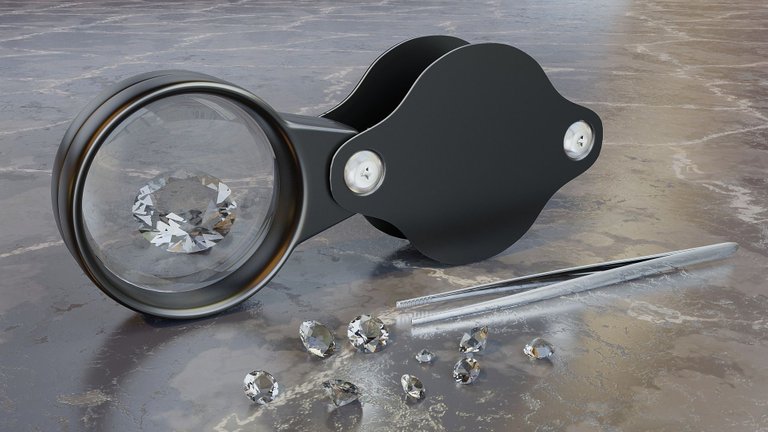Ultrahard Fullerene Diamond Glass
Here’s a recipe for ultrahard diamond glass: Take a handful of fullerenes. Heat them up to 900 – 1000° Celsius. Compress them. Bam! The resulting material is very hard and has the highest heat conductivity from all known amorphous materials.

Image by MasterTux from Pixabay
- Be also sure to check out my other posts and follow me @kralizec and subscribe to my Youtube channel at Kralizec Gaming Youtube Channel
Carbon is a very flexible element capable of holding in many different structures with various properties. From graphene to diamond. Some are amorphous some are perfect crystals. Some forms have very interesting properties but are hard to make. This is precisely the case with diamond glass.
Yingwei Fei from the Carnegie Institute for Science and his team managed to do it. They created ultrahard diamond glass with high heat conductivity. Synthesizing an amorphous carbon material with 3D bonds – or glass – has long been on material scientists’ wishlist. The trick lies in finding the correct starting material and then compressing it.
When you try to do this with graphite you will get an ordinary diamond. Diamond may seem like a great candidate but its extreme melting point of 4,277° Celsius disqualifies it for most practical use. Fei and his colleagues now found the correct answer. Fullerenes. These cute little ball-shaped carbon structures were first collapsed with heat and then compressed. The result is a millimeter-sized diamond glass.
Later analyses show that this glass can survive up to 102 gigapascals of pressure. That is higher than with natural diamonds and just a smidge lower than with the recently synthesized AM-III glass that can survive 113 gigapascals. The new material has the benefit of having extremely high heat conductivity – the highest among all known amorphous materials. Another benefit is that it can be synthesized at temperatures between 900 – 1,000 degrees Celsius as these temperatures can be achieved in common industrial production.
The creation of glass with these properties opens the door for various applications. The key will now lie in finding a way to create the material in large quantities or large pieces. But its relatively low creation temperature makes it a promising candidate.
Sources:
- If you like the content I’m producing about science maybe you will like the content I produce about gaming as well! Be sure to check out my other posts!